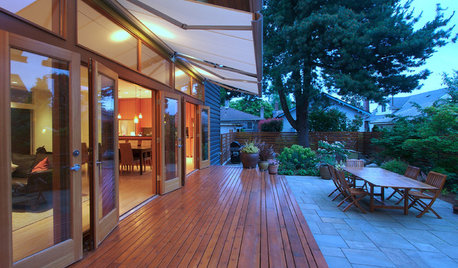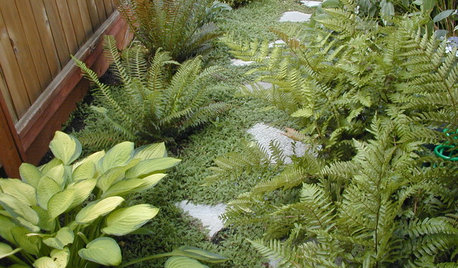Row cover
borderokie
10 years ago
Related Stories

HOUZZ TOURSMy Houzz: Relaxed Glamour in a Downtown Row House
See how this Maryland couple put their own creative stamp on their 1890 home
Full Story
HOUZZ TOURSDesign Lessons From a 10-Foot-Wide Row House
How to make a very narrow home open, bright and comfortable? Go vertical, focus on storage, work your materials and embrace modern design
Full Story
HOUZZ TOURSHouzz Tour: Eclectic Row House in London
Vintage treasures, original illustrations and family keepsakes make this bright home just right for a British family of four
Full Story
HOUZZ TOURSHouzz Tour: Loving the Old and New in an 1880s Brooklyn Row House
More natural light and a newly open plan set off furnishings thoughtfully culled from the past
Full Story
BASEMENTSRoom of the Day: Swank Basement Redo for a 100-Year-Old Row House
A downtown Knoxville basement goes from low-ceilinged cave to welcoming guest retreat
Full Story
TRANSITIONAL HOMESHouzz Tour: A Sophisticated Row House in the U.S. Capital
Nuanced textures and elegant flourishes give a 19th-century home a new attitude
Full Story
MY HOUZZMy Houzz: A Cocktail of Industrial and Cozy on Louisville's Whiskey Row
Muted tones and soft textures transform an open loft space into an inviting home
Full Story
PATIOSPatio Details: Awning-Covered Patio and Playhouse for a Shared Property
A main house’s patio uses a wall of the property’s secondary unit to help create a private outdoor living space
Full Story
LANDSCAPE DESIGN6 Great Ways With Garden Ground Covers
Use them as problem solvers, weed killers, color and texture providers ... ground cover plants have both practical and visual appeal
Full StoryMore Discussions







Okiedawn OK Zone 7
borderokieOriginal Author
Related Professionals
Fitchburg Landscape Architects & Landscape Designers · Aberdeen Landscape Contractors · Belmont Landscape Contractors · Cockeysville Landscape Contractors · Davis Landscape Contractors · Manhattan Landscape Contractors · New Berlin Landscape Contractors · Westchester Landscape Contractors · Markham Landscape Contractors · Gladstone Decks, Patios & Outdoor Enclosures · Lakewood Decks, Patios & Outdoor Enclosures · Lebanon Decks, Patios & Outdoor Enclosures · Mastic Decks, Patios & Outdoor Enclosures · Orland Park Decks, Patios & Outdoor Enclosures · Port Saint Lucie Decks, Patios & Outdoor Enclosuresslowpoke_gardener
Okiedawn OK Zone 7